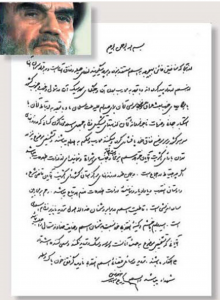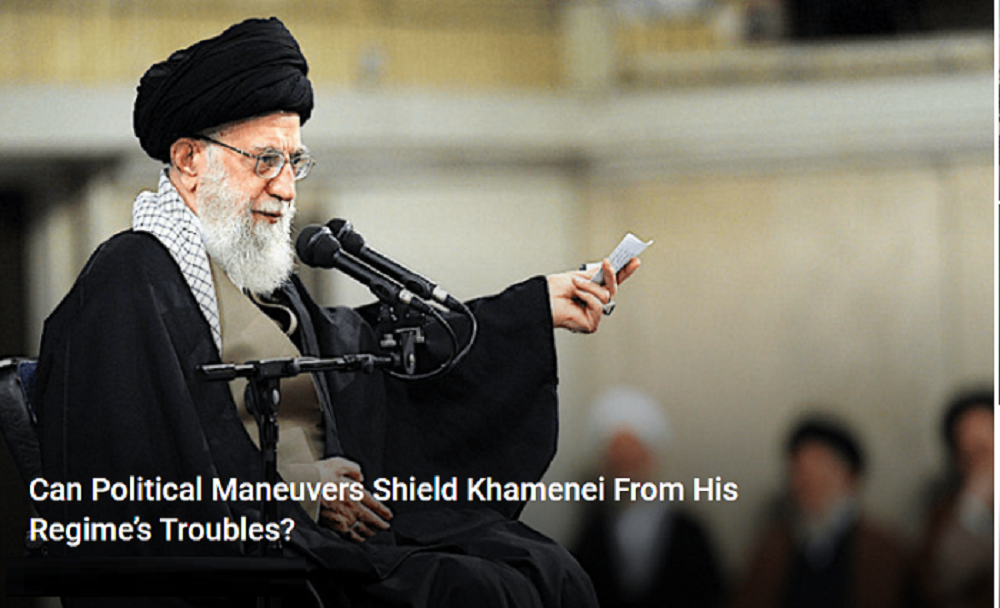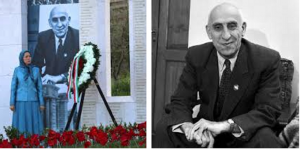
(Video) The Unyielding Struggle for Justice: The 1988 Massacre in Iran and the Fight for Freedom
This dark chapter not only highlights the regime's ruthless pursuit of power, also sets the stage for an ongoing struggle for justice and accountability today.
PARIS, FRANCE, February 3, 2025 /EINPresswire.com/ -- The National Council of Resistance of Iran (NCRI) Foreign Affairs Committee in an article published that in the summer of 1988, Iran witnessed one of the most horrific atrocities in its modern history the systematic massacre of over 30,000 political prisoners.
Orchestrated by the regime under then-Supreme Leader Ayatollah Ruhollah Khomeini, this brutal campaign targeted primarily members and supporters of the People’s Mojahedin Organization of Iran (PMOI/MEK), the leading opposition group.
This dark chapter not only highlights the regime's ruthless pursuit of power but also sets the stage for an ongoing struggle for justice and accountability that resonates today.
The Catalyst: Khomeini’s Fatwa
The massacre was precipitated by a chilling fatwa issued by Khomeini, declaring that all prisoners loyal to the MEK were “waging war on God” and should be executed without mercy. His directive was clear: those in power must not show compassion.
To implement this decree, Khomeini established “death committees” across Iran, which operated with alarming speed. These committees summoned prisoners one by one, asking only about their political affiliations. A response identifying as a “Mojahed” led to immediate execution, while those who denounced the MEK had their lives spared temporarily, only to face further imprisonment.
The interrogations conducted by these committees were often brief, resulting in swift executions. Most victims had already been serving sentences for political activities or had completed their terms; their loyalty to the MEK ultimately sealed their fate.
Key Figures and Their Roles
Among the key perpetrators of this atrocity were members of the Tehran death committee, including Hossein-Ali Nayyeri, Morteza Eshraqi, Ebrahim Raeesi, and Mostafa Pourmohammadi. These individuals later ascended to significant positions within the Iranian government.
In a notable audio recording from 2016, Khomeini's former heir Hossein-Ali Montazeri condemned the actions of these death committees, labeling the mass executions as “the greatest crime committed during the reign of the Islamic Republic.” His opposition to the massacre ultimately led to his removal from power.
Waves of Carnage
The massacre unfolded in distinct waves, beginning with executions at Tehran's Evin and Gohardasht prisons. Despite efforts to maintain secrecy, reports of these atrocities began to emerge. The killings soon spread nationwide, affecting over 100 cities as local death committees purged political prisoners.
Formerly released prisoners were re-arrested and executed alongside Marxists and other leftist activists. Even those whose political affiliations were ambiguous were not spared; Khomeini's orders ensured that no opposition remained.
The violence extended beyond prison walls as individuals arrested for supporting the National Liberation Army MEK's armed wing were executed without proper trials. By early 1989, the killing subsided, leaving a nation scarred by loss.
The Quest for Justice
For decades, the Iranian regime denied any wrongdoing regarding the 1988 massacre, actively covering up mass graves where victims were buried.
However, survivors and families of victims have fought tirelessly to keep the memory alive. The Justice-Seeking Movement has gained momentum in recent years, fueled by survivor testimonies and smuggled documents that build a case for prosecuting those responsible.
In 2024, Javaid Rehman, then-UN Special Rapporteur on Human Rights in Iran, issued a groundbreaking report calling for an international investigation into the executions.
He labeled them “atrocity crimes” and “genocide,” emphasizing that many perpetrators remain in power today. Rehman's findings also highlighted ongoing suffering among victims' families who still grapple with enforced disappearances—an act classified as a crime against humanity.
A Legacy of Resistance
The 1988 massacre is not just a historical event; it symbolizes an enduring spirit of resistance among those who oppose tyranny. Many prisoners faced death rather than betray their beliefs by disavowing the MEK. Their bravery continues to inspire generations of Iranians who strive for freedom and justice.
Despite attempts by the Iranian regime to erase this dark chapter from history, efforts to seek accountability persist. As international awareness grows regarding this atrocity, so does hope for justice a hope that strengthens with each passing year.
The Broader Battle for Freedom
The struggle against tyranny extends beyond historical accounts; it encompasses contemporary battles within Iran and on international fronts. The National Council of Resistance of Iran (NCRI) has emerged as a leading force advocating for freedom from the oppressive clerical regime.
Recent discussions surrounding Rehman's report have ignited debates about accountability and justice within international legal frameworks. His legal theory regarding genocide has gained traction among scholars and advocates alike.
This growing recognition underscores an essential truth: there exists a profound battle between two opposing forces the Iranian Resistance and the Islamic Republic.
Internal and External Dynamics
The Iranian regime's response to Rehman's findings illustrates its desperation to maintain power amidst mounting evidence against it. Mobilization efforts include leveraging appeasers with vested economic interests in preserving the status quo and utilizing Persian-language media outlets that prioritize their agendas over genuine support for Iranian freedom.
Conversely, the Iranian Resistance draws strength from a vast network comprising prominent lawyers, human rights activists, and ordinary citizens united in their quest for justice. This coalition spans continents and reflects a collective commitment to dismantling oppression both within Iran and abroad.
Historical Context: A Continuous Struggle
This ongoing battle is not new; it echoes historical struggles dating back to Iran's Constitutional Revolution and figures like Dr. Mohammad Mossadegh. The current confrontation between forces advocating freedom and those upholding hereditary dictatorships reveals an evolution in resistance strategies but retains its core objective: achieving independence from tyranny.
As tensions escalate between these two fronts freedom fighters versus authoritarianism the stakes have never been higher. The Iranian people’s resolve is tested daily as they navigate a complex landscape filled with political factions determined to challenge or support the clerical regime.
Conclusion: A Call for Global Awareness
The legacy of the 1988 massacre serves as both a reminder of past horrors and a rallying cry for future action against injustice. As survivors continue their fight for recognition and accountability, it is imperative that global communities remain vigilant against such atrocities.
Holding perpetrators accountable is essential not only for justice but also as a deterrent against future violations of human rights. The world must not turn a blind eye to these events; instead, it should support movements striving for freedom within Iran while amplifying voices demanding justice for victims of past atrocities.
In conclusion, as we reflect on this dark chapter in Iranian history, we are reminded that resilience in seeking justice is unwavering—both within Iran and across borders fueling hope for a brighter future free from tyranny.
BLOOD-SOAKED SECRETS
https://www.amnesty.org/en/latest/campaigns/2018/10/blood-soaked-secrets/
To visit the Museum of the Resistance Movement, please use the link below.
https://my.matterport.com/show/?m=7rZUkzroZEj
To subscribe weekly Newsletter of NCRI, please use this link. https://bit.ly/3SMgEla
Shahin Gobadi
NCRI
+33 6 61 65 32 31
email us here
For decades, the Iranian regime denied any wrongdoing regarding the 1988 massacre, actively covering up mass graves where victims were buried.
Distribution channels: Human Rights, International Organizations, Politics, U.S. Politics, World & Regional
Legal Disclaimer:
EIN Presswire provides this news content "as is" without warranty of any kind. We do not accept any responsibility or liability for the accuracy, content, images, videos, licenses, completeness, legality, or reliability of the information contained in this article. If you have any complaints or copyright issues related to this article, kindly contact the author above.
Submit your press release




